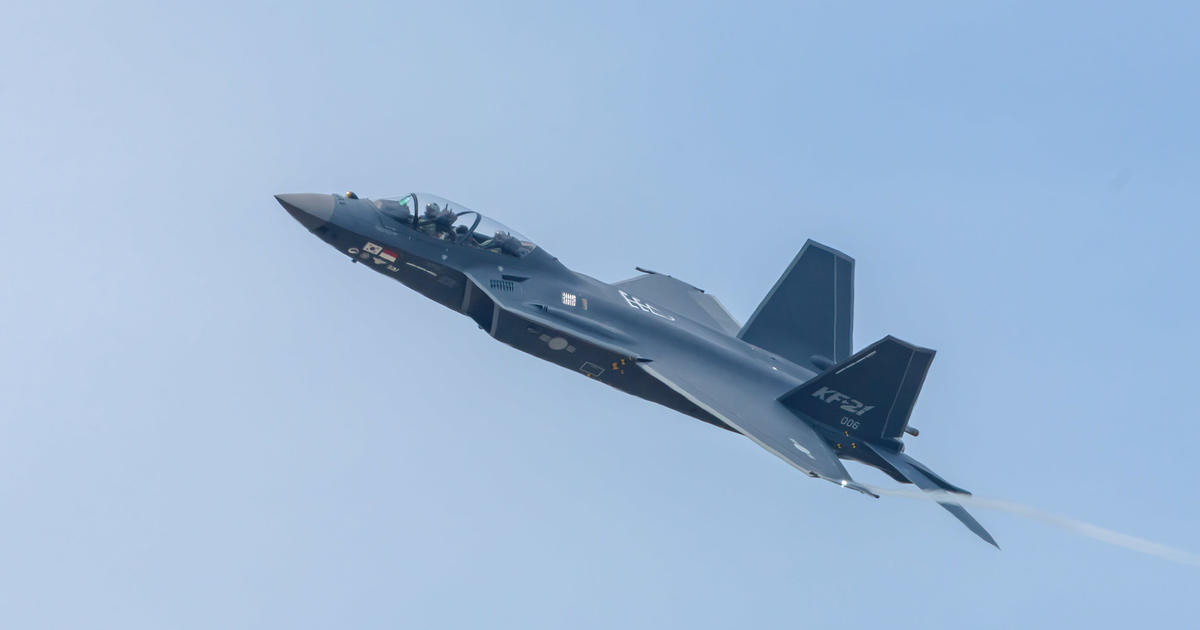Seoul — South Korea’s military said Thursday it scrambled fighter jets as two Chinese and four Russian military planes entered its air defense zone, an area wider than the country’s airspace. The Chinese and Russian planes entered and exited the Korea Air Defense Identification Zone (KADIZ) in the East Sea, also known as the Sea of Japan, for just less than 20 minutes around midday local time, Seoul’s Joint Chiefs of Staff said.
But “there was no invasion of airspace,” the joint chiefs added, and the South Korean military identified the planes “before they entered KADIZ, and deployed air force fighter jets to take tactical measures in preparation for contingencies.”
An air defense identification zone is a broader area than a country’s airspace in which it tries to control aircraft for security reasons, but the concept is not defined in any international treaty.
AP
China’s foreign ministry spokeswoman Mao Ning described the incident on Thursday as “a routine flight activity.”
“As far as I know, I think this was a routine flight activity by Chinese military aircraft above international waters, which is understandable and in accordance with international law,” she said during a regular press briefing.
China and Russia are North Korea’s traditional allies, and Washington warned last month that military ties between Pyongyang and Moscow were “growing and dangerous.”
The United States has called on Beijing — the North’s biggest economic benefactor — to restrain Pyongyang.
Russia and China’s flourishing ties have also been a cause for concern in the West. China has refused to condemn Russia’s invasion of neighboring Ukraine, and during a visit to Beijing in 2022, Russia’s veteran foreign minister Sergey Lavrov said the two allies would work to create a new “democratic world order.”
U.S. National Security Advisor Jake Sullivan said last week that Washington and allies Seoul and Tokyo would “stand up” for stability across the Taiwan Strait, a sensitive waterway separating Taiwan from China.
The three allies also reiterated their commitment to freedom of navigation in the disputed South China Sea.
China has in recent years ramped up military and political pressures on democratic Taiwan, which it claims as its territory.
To reinforce that both the Taiwan Strait and the South China Sea are international waterways, Washington and its Western allies have increased “freedom of navigation” crossings by naval vessels, angering Beijing.
Nuclear-armed North Korea last month put a military spy satellite into orbit, with Seoul saying it did so with Moscow’s help, in return for supplying Russia with weapons for its Ukraine war.
In September, North Korean dictator Kim Jong Un told President Vladimir Putin during a rare visit to Russia that he could count on North Korea’s “full and unconditional support” in the “sacred fight” to defend Russian security interests — an apparent reference to the assault on Ukraine,
One senior South Korean official told CBS News before that summit that Seoul was concerned Kim could be looking to acquire technology from Russia to build nuclear-powered submarines and more advanced rockets and satellites, in addition to cooperation on conventional weapons.
The satellite launch fractured an inter-Korean military agreement established to de-escalate tensions on the peninsula, with both countries ramping up security along the demilitarized zone separating them.
In June, South Korea deployed fighter jets in response to Chinese and Russian warplanes near its airspace, as the two countries conducted joint air force patrols over the Sea of Japan and the East China Sea.
Military jets from Moscow and Beijing also entered and exited Seoul’s KADIZ in November last year, prompting the South to scramble its fighter jets.
Similar to the incident on Thursday, none of them violated South Korea’s airspace at that time.


